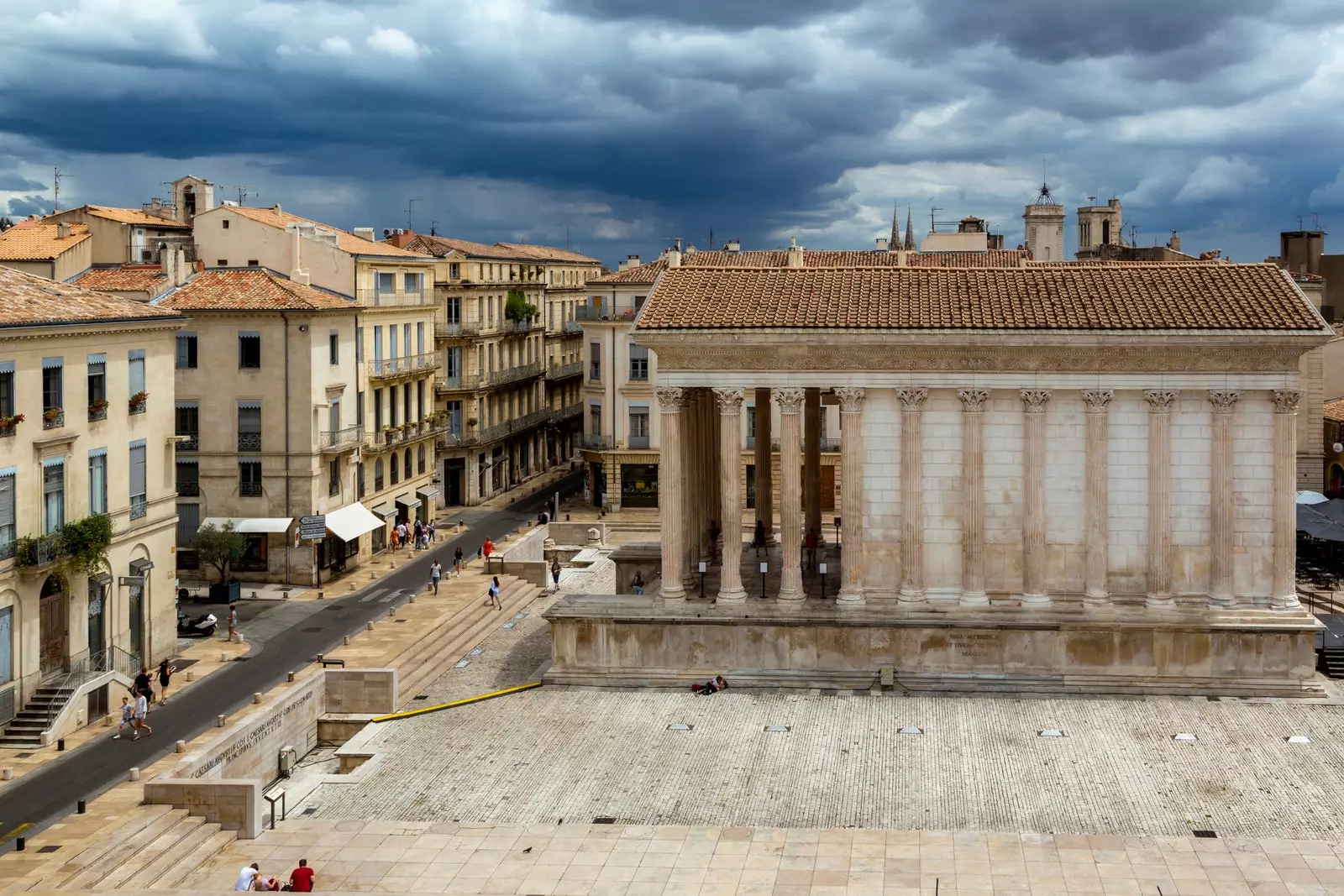
Maison Carré, the Roman temple that is the pride of the residents of Nimes.
La Tour Magne stands tall on Mont Cavalier, watching over the reddish tiles from the roofs of Nimes, in the same way that the Torre delle Milizie crowns the top of the Viminal to control the esplanade of the Imperial Forums. In Nimes it smells more like lavender than basil, and its sidewalks have fewer sinkholes than their Roman sisters, from whom he has inherited a taste for fashion, the street stalls and the quick steps of its citizens.
You can walk in Nimes, and it's hard to do it in Rome without fearing that a motorcycle will mess up your bangs. The Little Eternal City, a Latin piece inserted in Provence, it is not a mere model of her Italian godmother: Nimes has its own idiosyncrasies.
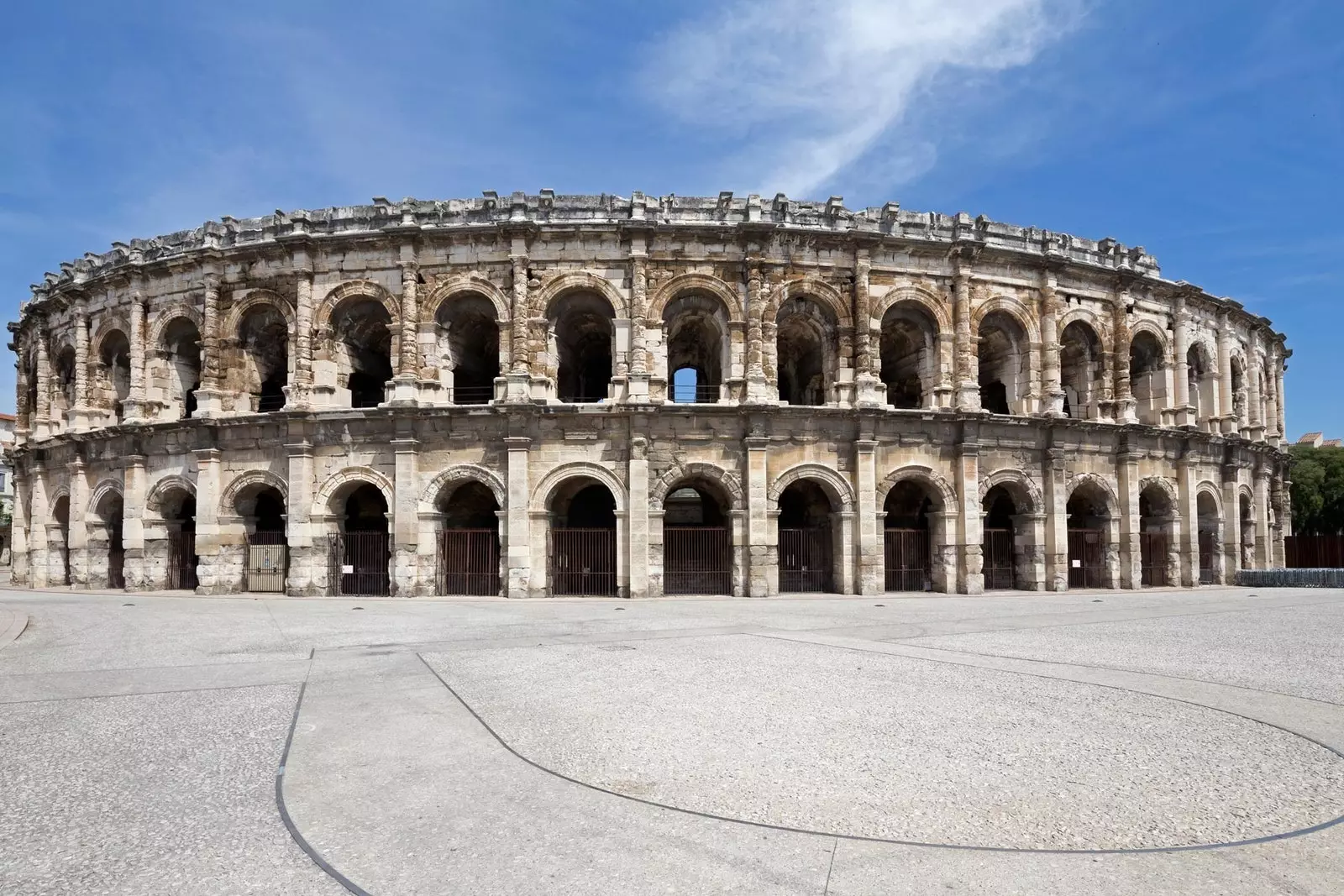
Nimes
THE AMPHITHEATER
Let's start with the Arenas, the majestic amphitheater of ancient Nemausus. Verona, Arles, Mérida, Tarragona, Itálica… All of them have remains of Roman amphitheaters where life and death were cheered on, but none are in as good a state as the Arenas de Nîmes.
The Roman Colosseum lacks its southern sector, while, in Nimes, the arcades of the amphitheater are preserved intact. The fate of the Arenas was similar to that of the Colosseum: after its abandonment as a venue for shows, it was reused by aristocratic families as a residence, castle and palace, housing between the arches the homes of his servants and vassals.
Like the Colosseum, the Nimes Arena became a neighborhood within the city, with chapels and churches where gladiators and beasts once lived. It was not until the arrival of enlightened lights, at the end of the 18th century, that the Arenas ceased to be a ruin, to be considered all a monument that today makes Nimes famous.
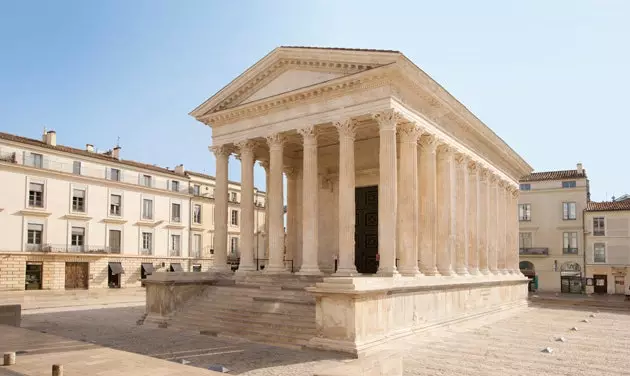
Maison Carrée in Nimes
THE TEMPLE
Unlike Rome, Nimes is pristine. It's hard to walk under the plane trees of Víctor Hugo Boulevard without fearing staining something that breaks the careful maintenance of the city, and that, if we have in our hands a French crêpe, it's complicated.
Walking while eating is a national custom in France, and showing that you can do it without ruining clothes and urban furniture distinguishes the Gauls from those who pretend to be. try to do it as they walk north towards the Maison Carré, and hold on tight to the crêpe: when you find what you're looking for, it may fall to the ground.
A small temple of marble so white that it seems to be made of sugar cubes: that is the Maison Carré. The work that the Romans bequeathed to Nimes does not have the monumentality of the Pantheon of Agrippa nor the provincial pride of the Temple of Diana in Mérida, but has a shy beauty which makes him the most interesting of the party. It is kept in very good condition and, thanks to the wide square that surrounds it, It is easy to imagine the environment in which it was conceived, since we have inherited from Rome the taste for wide squares that embrace monuments and allow us to walk without crashing.
beautifully restored, the Maison Carré is the pride of the residents of Nimes, who remain closely linked to their Roman past. The city's coat of arms, a crocodile tied to a palm tree, commemorates the image that appeared on Latin coins for thank the Gauls of Nemausus for their help in the conquest of Egypt: Since then, both Rome and Nimes have walked hand in hand.
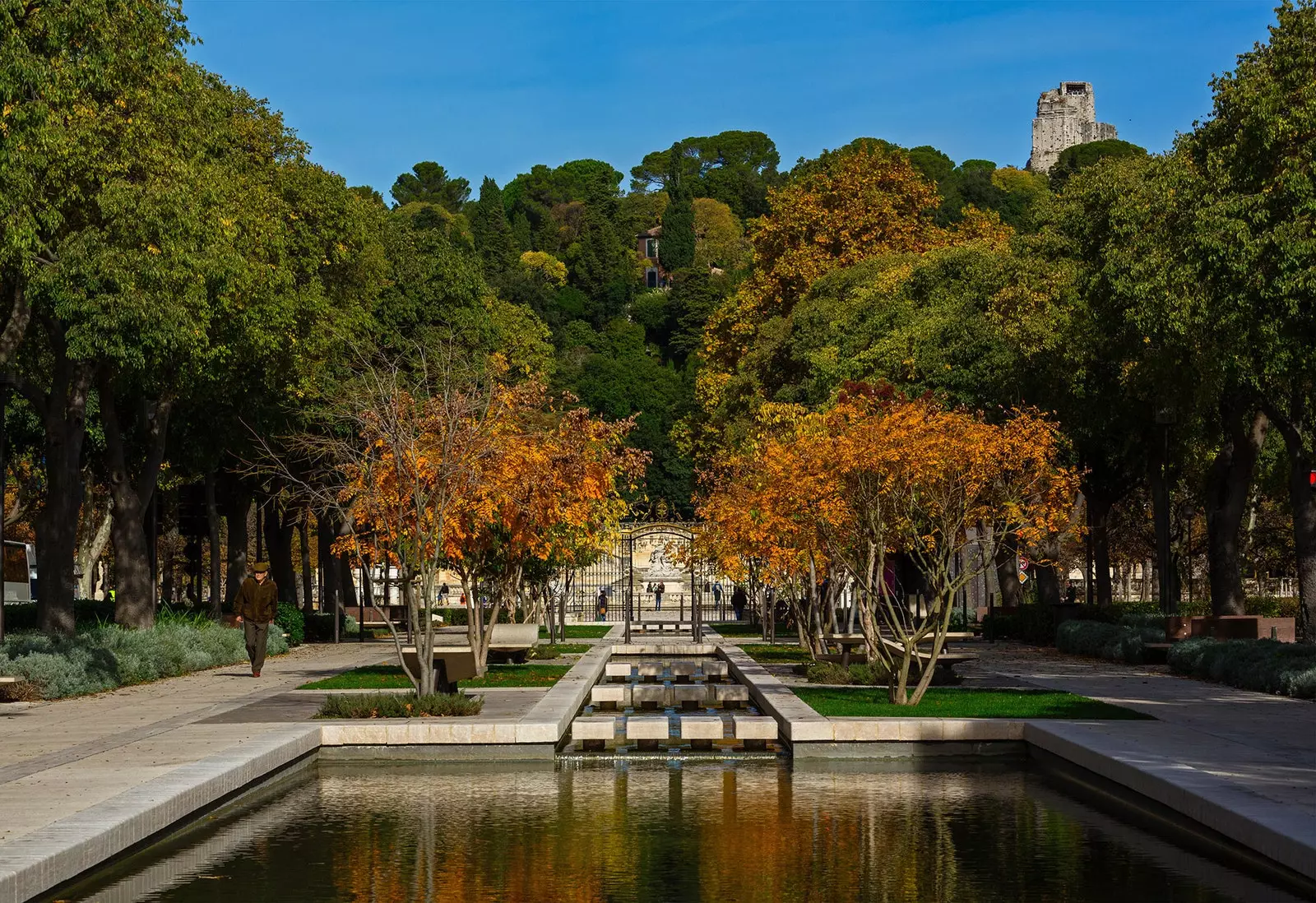
Jean Jaurès and the Jardins de la Fontaine
THE GARDENS
The gardens of the Villa Borghese find worthy twins in the Jardins de la Fontaine, which rise to the north of the old town, between the marbles of the Maison Carreé and the Tour Magne.
In these gardens decorated to the taste of 'eighties', you will find the spring that gave rise to the city, whose noise, turned into a fountain, relieves children, the elderly and visitors from the heat. French gardens have long competed with Italian gardens to be at the forefront of European fashions, and the Jardins de la Fontaine are an example of exuberance and freshness in the heart of the asphalt jungle.
The climate of Nîmes, tempered the mediterranean heat Due to its proximity to the coast and the mountains, it is ideal so that, with the arrival of spring, hundreds of flowers light up the place on which the city was founded.
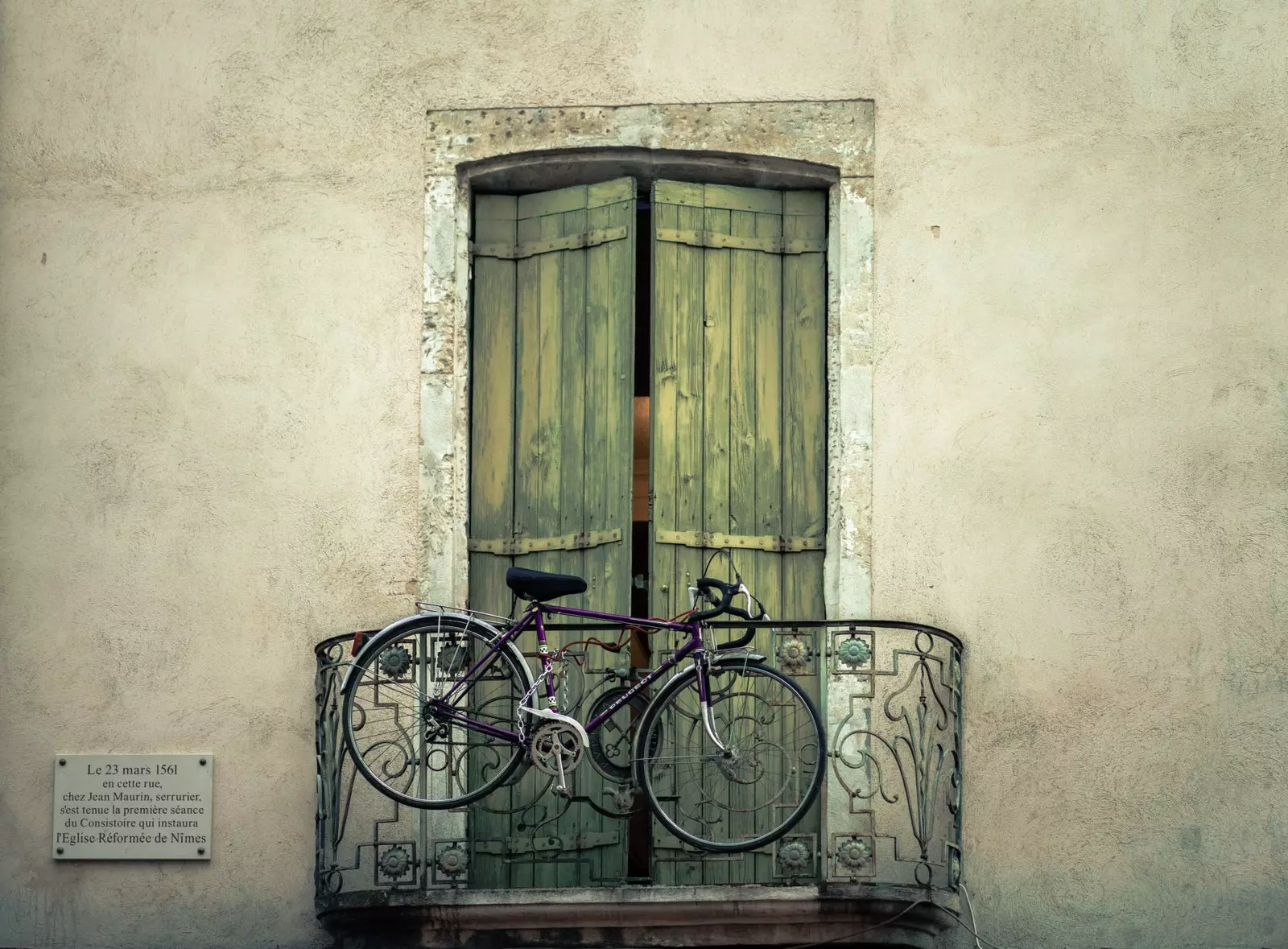
Bicycle in a window in Nimes, France.
THE HISTORICAL CENTER
The historic center of Nîmes keep postcard alleys worthy of appearing in Trastevere and in the Harry Potter movies. Like some kind of Diagon Alley, the medieval Rue de l'Aspic seems to narrow on the walker, and the windows almost come to kiss.
The same old feeling, of streets that never thought of housing cars, appears as we walk the Rue des Merchands, home of merchants, until we came face to face with the white mass of the cathedral. Its facade is like a kind of collage, a ratatouille of styles ranging from Romanesque to Neoclassical, worthy of a history that goes back to the origins of Christianity in Nimes.
The nearby Plaza del Chapitre continues this trend, and the 21st century is shown next to the cathedral and the medieval houses that surround it in the form of beautiful iron fountains located as a staircase, providing avant-garde to a space taken over by the past.
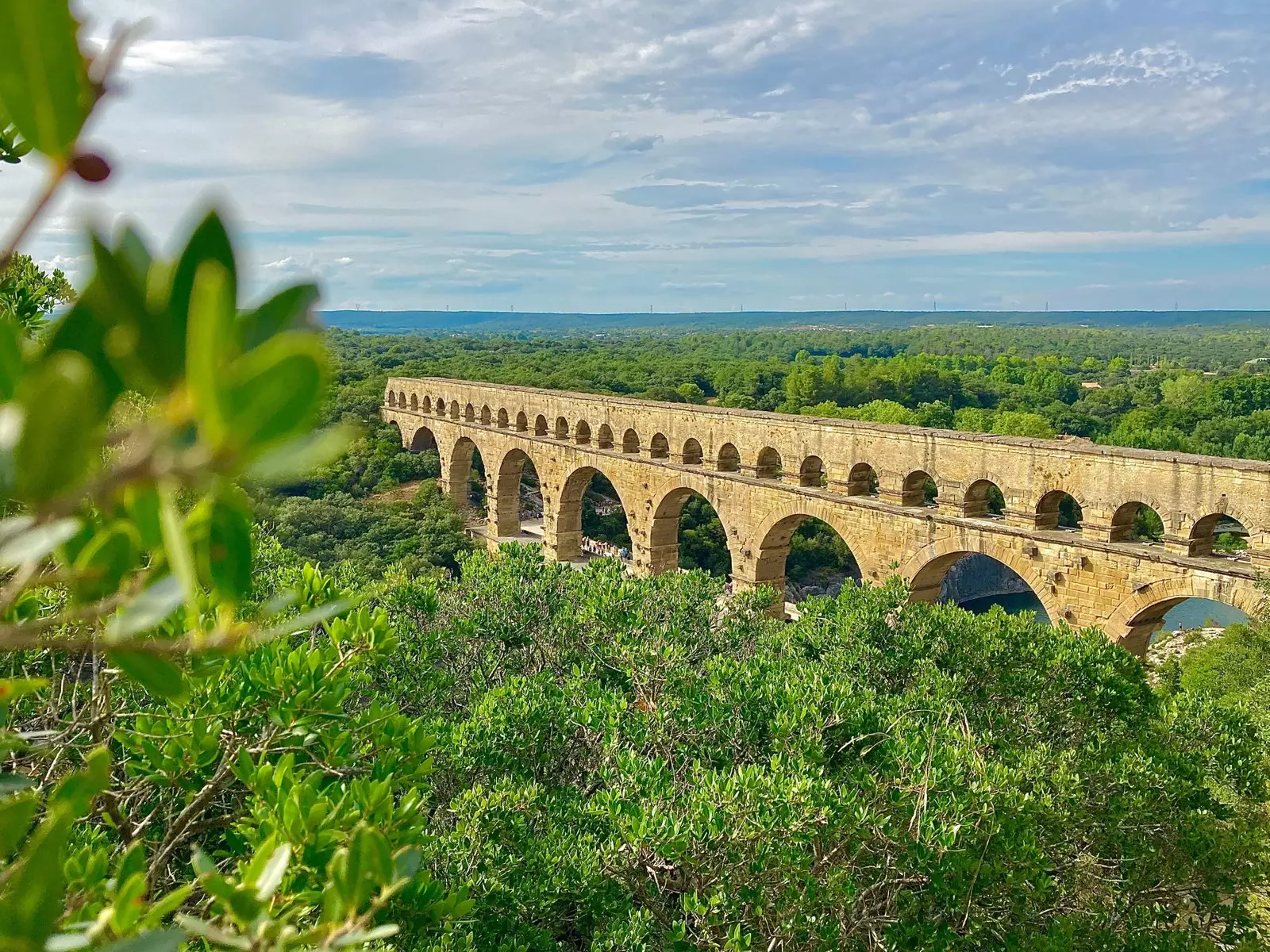
Pont du Garde, in Nîmes.
THE AQUEDUCT
To complete a worthy visit to the little French Rome, It is necessary to visit a monument far from the center, but essential to understand the importance that Nimes once held. Aqueducts gave life to cities and, if Rome came to have more than a dozen, Nimes also possessed a water server to match his wealth.
The Pont du Garde rises majestically a few kilometers from the city, bridging the Gardon river gorge with the heavy lightness possessed by Roman buildings. Used as a bridge for centuries, now it is a monument that should be visited in the cooler months, when the water surrounds the pillars, and we can slide between them in a canoe.
The beauty of the Pont du Garde is preserved intact thanks to the efforts of the French administrations and, in that, Nimes can proudly say that it tries harder than Rome. The city, mirror and sister of the Gallic city, let its aqueducts languish under brambles, blurring the beauty of the monuments that run through the Parco degli Acquedotti. Rome taught Nimes how to walk; now, she must let her little sister, her eternal old age come, teach her how to preserve herself. **
